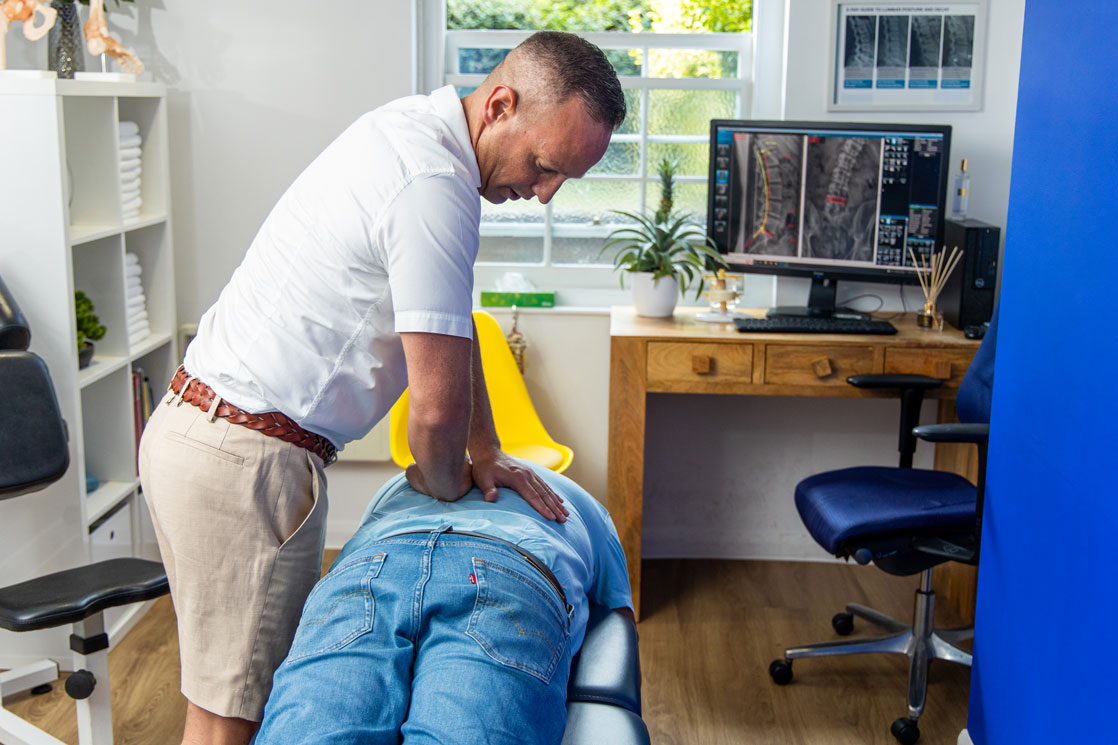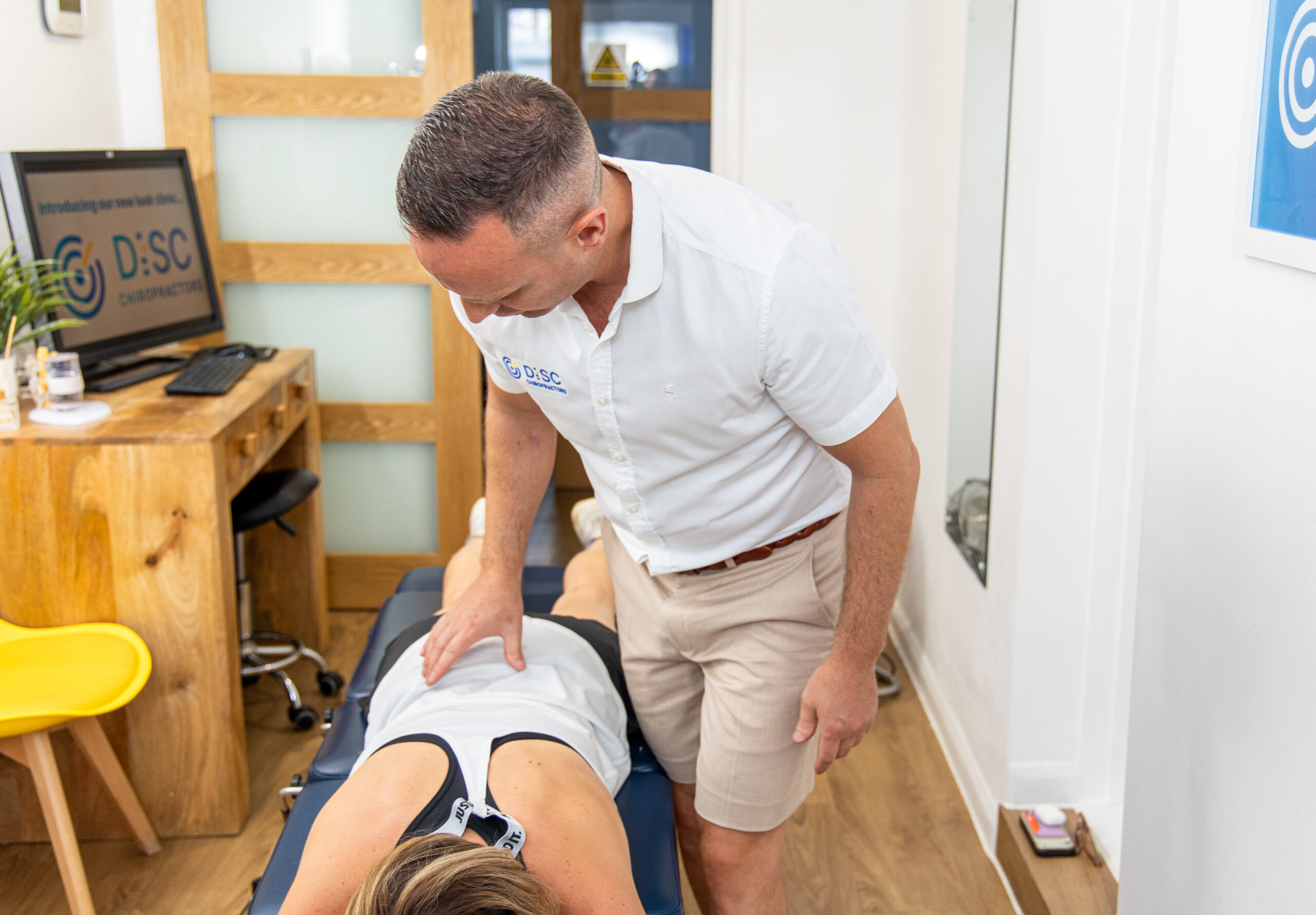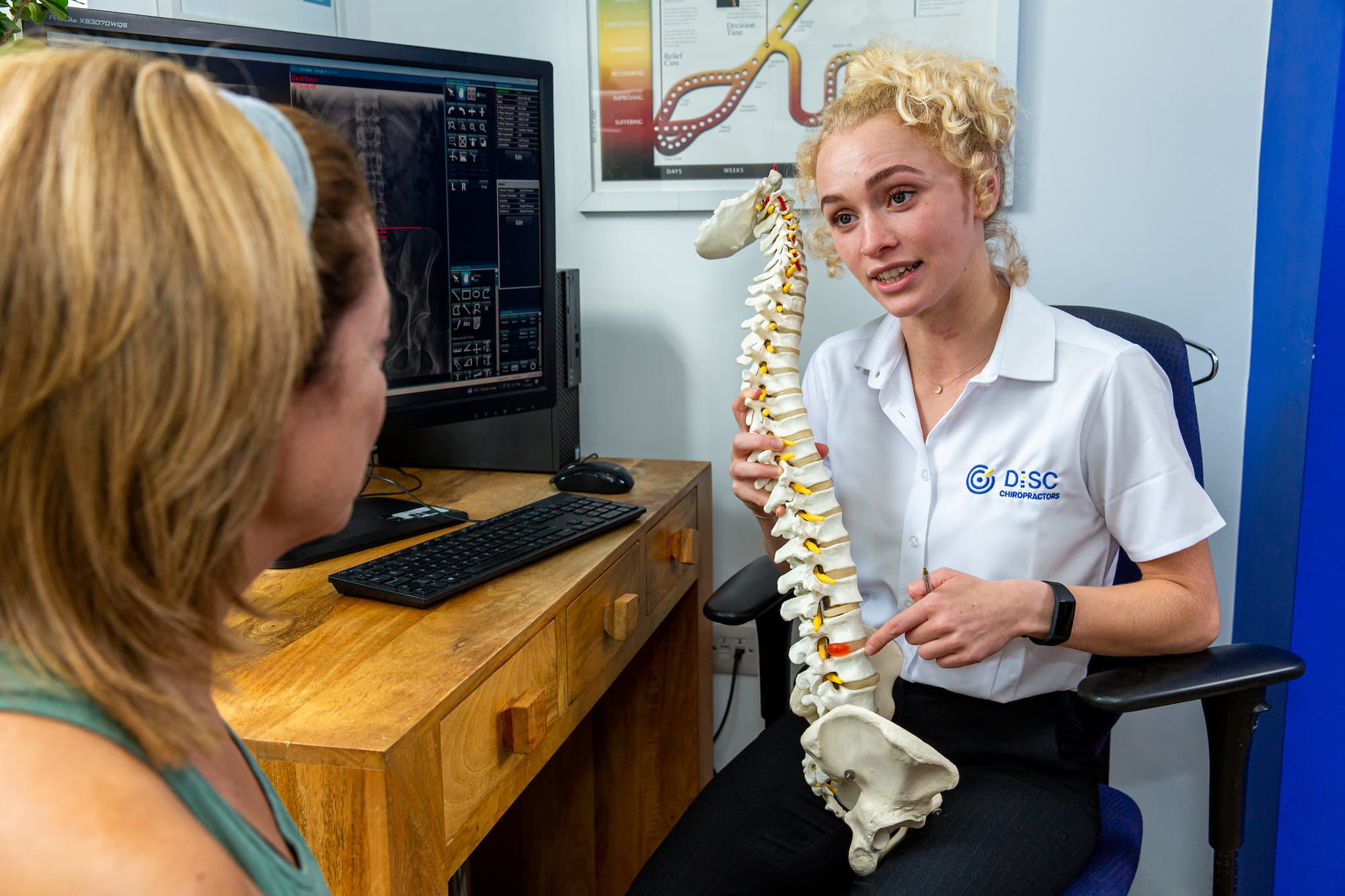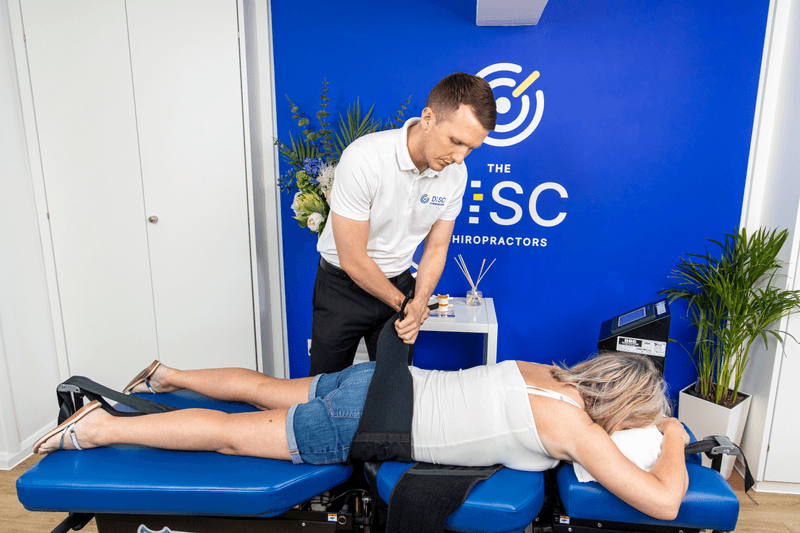Revolutionary Spinal Stenosis Treatments - Surbiton
Book Now
“Spinal stenosis is the most common cause of leg pain and disability in adults over the age of 50, with approximately 2 million people affected each year.”
American Academy of Orthopaedic Surgeons
is it possible to get Spinal stenosis relief?
If you’re struggling with spinal stenosis, you’re not alone. This arthritic condition is where the spaces in the spine narrow, eventually pressurising spinal nerves. But there’s good news! Our specialist chiropractic clinic offers a variety of groundbreaking non-surgical treatments to help manage your symptoms and improve your quality of life.
Spinal stenosis is a condition where the joints of the spine change arthritically resulting in the narrowing of spaces within your spine, which can put pressure on the nerves that travel through the spine.
It is believed that improving the blood flow to the nerves is key to their recovery, making mobilising the spine integral to any protocol.
Causes of stenosis:

Dehydration and collapse of spinal disc spaces

Enlargement of the facet joints

Thickening of the spinal ligaments
is Chiropractic care an effective spinal stenosis treatment?
The idea of chiropractic care might seem scary to many potential spinal stenosis patients, and as involves advanced arthritis and a fair amount of scepticism is appropriate, but it’s important to remember that chiropractic care isn’t all about twisting and clicking joints, our philosophy extends into many alternative, more gentle techniques which here at The DISC Chiropractors we have in sledge loads.
In any case, Spinal Manipulation is unlikely to make a case worse; in most cases where we decide against manual adjustments, the decision has more to do with the acknowledgement that it’s unlikely to be effective at moving the joints as intended.

Types of stenosis:

Central stenosis

Foranimal stenosis

Tandem stenosis (multi-site stenosis)


what is the most effective Spinal stenosis treatment?
The modern evolution of spinal traction is known as Spinal Decompression Therapy (SDT) and is without a doubt, this is the clinic’s game-changer when it comes to un-trapping nerves even in cases of advanced arthrosis. This Spinal stenosis treatment, gently stretches the spine, creating more space and movement within the spinal canal and easing nerve compression.
Our Spinal Decompression Tables can target specific segments of the spine with a variety of angles, making options to find relief, numerous. Whilst almost all chiropractic therapies rely on rotation in the lower back spinal decompression is the most effective way of providing axial forces that are crucial in healing nerve pain and providing the lasting mobility.
In cases of disc bulges or mild DDD, SDT can be used to regenerate damaged disc, however when arthritis has passed to a point where it is considered to be spinal stenosis, then treatment is primarily about symptomatic relief with rehabilitation required for a long-term recovery.
Some common signs of stenosis related pain:

Difficulty walking

Heavy muscles

Sharp shooting pain

Muscle weakness

Relieved by sitting

Cramps

Numbness or tingling

Bowel or bladder dysfunction
Spinal Stenosis treatment – Mobility work
Spinal Stenosis is primarily a condition caused by mobility issues in the spine, so it’s no surprise that spinal stenosis treatment centres around mobilisation techniques.
Hands-on therapy: Uses subtle movements to stretch and increase the flexibility and range of motion of the spinal, pelvic, and hip joints, helping to open the spaces in your spine and alleviate nerve pressure.
Instrument-Assisted Adjusting: If chiropractic adjustments are considered a bit too strong or downright contraindicated, then Instrument-Assisted Adjusting is the perfect accessory tool. Using a rhythmic, percussion-based therapy to mobilise the joints and increase blood flow we break down adhesions without needing to twist and crack a patient is an ideal solution.

“It may seem a funny comment, but do you find yourself leaning on the shopping cart for relief at the supermarket?
Being able to walk further when flexed forward is a sure sign of Lumbar Spinal Stenosis.”
Clinic Director – DISC
MAIN SPINAL STENOSIS TREATMENTS:

Mobility Work

Spinal Decompression Therapy

Laser Therapy


“The purpose of exercise for LSS is not to change spinal tunnel narrowing but rather to reduce irritation and improve nerve root resiliency to movement. “
NHS Website
Spinal Stenosis treatment – nerve rejuvenation
Laser Therapy: Harnessing the power of light laser therapy is a technique that uses specific light wavelengths to reduce inflammation, alleviate pain, and promote tissue repair in the spine. Laser is a ‘firefighter’ of the clinic.
Neuro-Muscular Stimulation: This exciting new therapy known as Neuro-Muscular Stimulation has become an essential addition to our clinical arsenal. This involves electrical currents that stimulate muscles and nerve endings, helping to reset or activate the pain and function of peripheral nerves.
We have even had success reactivating nerves that have long-term drop foot, a condition where the nerve function is no longer capable of lifting the foot whilst you walk.
Spinal Stenosis Treatment – The Role of Rehabilitation
Your journey to better spinal health includes personalised rehabilitation. We’ll design a program of exercises and stretches tailored to strengthen your spine, improve flexibility, and support your recovery. Our clinic has designed an expert rehab program for spinal stenosis patients following the latest research.
Start Your Journey to a Better Spine Today!
Living with spinal stenosis doesn’t mean living in discomfort. Our comprehensive chiropractic care is here to offer you relief and support. Whether it’s through mobilisation, chiropractic, decompression, laser therapy, neuromuscular stimulation, or a tailored rehabilitation program, we’re committed to helping you achieve a healthier, more comfortable spine.
Contact Us
To discover how we can assist with your Spinal Stenosis Treatment, don’t hesitate to click the icon below and book a comprehensive consultation for a detailed evaluation of your situation. Alternatively, why not organise a free chat with one of our expert clinicians? We’re always eager to talk about everything DISC related and look forward to helping you!
